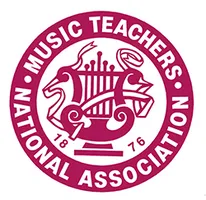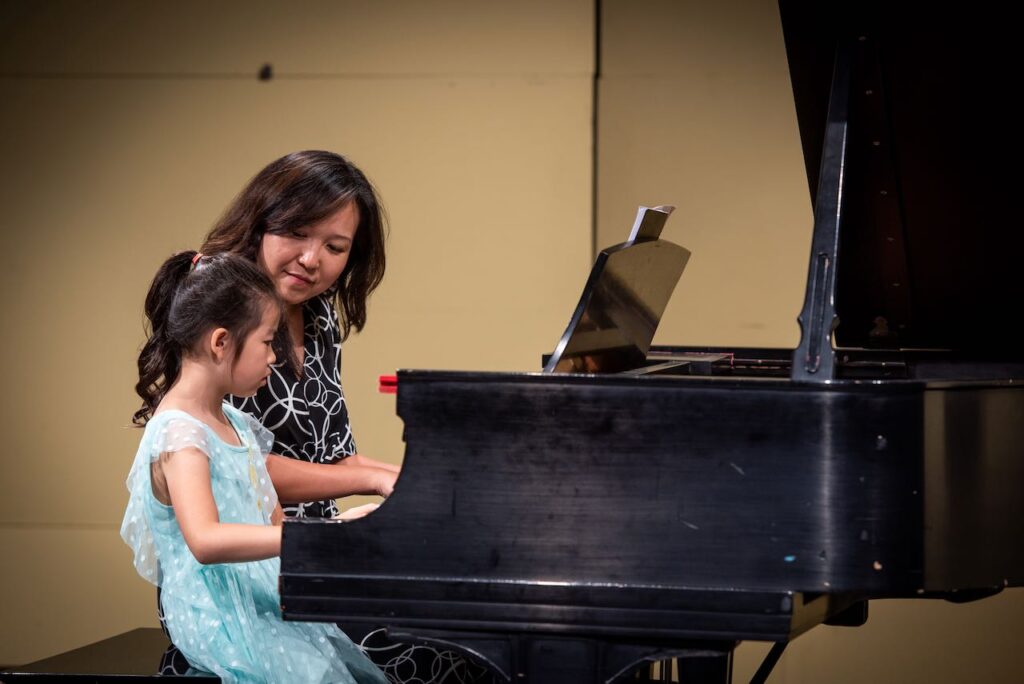To continue our “Once Upon a Tale” theme for the 2024-2025 school year, the EKS Music School senior faculty members have selected The Mother Goose as our focus for January and February. It is a suite of musical pieces that conjures a whimsical, fairytale world with lush harmonies and delicate textures. It offers a creative way to explore storytelling in music, enhancing their appreciation for how composers evoke emotions and imagery through sound.
The Mother Goose Suite by Maurice Ravel
The Mother Goose Suite is a set of five pieces for piano duet, inspired by the Mother Goose stories, each telling a different fairy tale in music. The work was composed in 1910 by French composer Maurice Ravel and dedicated to Jean and Mimi Godebski, children of his close friends. Ravel later scored the suite for orchestra, adding a prelude and four interludes between the movements to connect the individual stories. It was performed as a children’s ballet in Paris in 1912. The piano duet version is most frequently performed.
The Composer
Maurice Ravel (1875-1937) was one of the most important composers of the 20th century. He wrote many important works for the piano as well as the orchestra. Ravel is considered one of the great masters of orchestration. Think of the instruments as colors on a painter’s palette – the way a painter will choose colors, combine them, and blend them to create new colors.
Ravel did the same with the instruments of the orchestra, sometimes coming up with new sounds – or instrument “colors.”
Listening Assignments & More
Piano Duet
Pavane of the Sleeping Beauty (Pavane de la belle au bois dormant)
This solemn, ceremonial dance depicts Sleeping Beauty lying on the castle bed under the witch’s spell in a deep sleep. A pavane is a 16th century court dance originating in Italy. It is typically a slow, processional type of dance.
Tom Thumb (Petit Poucet)
This movement depicts the tiny character Tom Thumb travelling on a winding path through the forest, trying to find his way home.
“He thought he would easily find his way by following the bread he had scattered everywhere he had gone, but he was very surprised he couldn’t find one single crumb; the birds had come and eaten them all.”
Little Ugly One, Empress of the Pagodas (Laideronnette, Imperatrice des Pagodes)
Laideronnette, once a beautiful princess, was made ugly by a wicked witch’s spell. One day she met a green dragon who was a prince cursed by the same witch. The spell was broken and they were married. In one adventure they arrive in a country of pagodas (Chinese temples) made of porcelain and jewels.
Conversations Between Beauty and the Beast (Les entretiens de la Belle et las Bête)
Beast: “Beauty, will you be my wife?”
Beauty: “No, Beast!”
Beast: “I die happy because I have had the pleasure of seeing you again.”
Beauty: “No, my dear Beast, you shall live to be my husband!”
The beast vanishes and Beauty sees before her a handsome prince. The prince thanks her for breaking the witch’s spell.
The Fairy Garden (Le jardin féerique)
Prince charming kisses the Sleeping Beauty and she awakens. The Good Fairy gives the happy couple her blessing.
Orchestra
Pavane of the Sleeping Beauty (Pavane de la belle au bois dormant)
This solemn, ceremonial dance depicts Sleeping Beauty lying on the castle bed under the witch’s spell in a deep sleep. A pavane is a 16th century court dance originating in Italy. It is typically a slow, processional type of dance.
Tom Thumb (Petit Poucet)
This movement depicts the tiny character Tom Thumb travelling on a winding path through the forest, trying to find his way home.
“He thought he would easily find his way by following the bread he had scattered everywhere he had gone, but he was very surprised he couldn’t find one single crumb; the birds had come and eaten them all.”
Little Ugly One, Empress of the Pagodas (Laideronnette, Imperatrice des Pagodes)
Laideronnette, once a beautiful princess, was made ugly by a wicked witch’s spell. One day she met a green dragon who was a prince cursed by the same witch. The spell was broken and they were married. In one adventure they arrive in a country of pagodas (Chinese temples) made of porcelain and jewels.
Conversations Between Beauty and the Beast (Les entretiens de la Belle et las Bête)
Beast: “Beauty, will you be my wife?”
Beauty: “No, Beast!”
Beast: “I die happy because I have had the pleasure of seeing you again.”
Beauty: “No, my dear Beast, you shall live to be my husband!”
The beast vanishes and Beauty sees before her a handsome prince. The prince thanks her for breaking the witch’s spell.
The Fairy Garden (Le jardin féerique)
Prince charming kisses the Sleeping Beauty and she awakens. The Good Fairy gives the happy couple her blessing.















